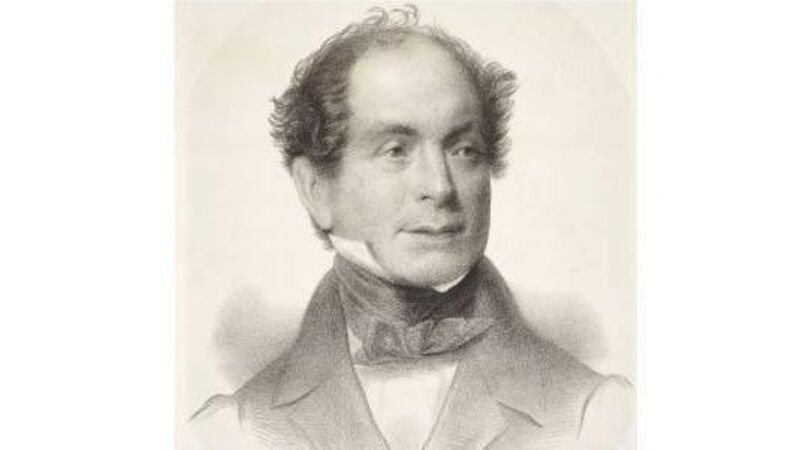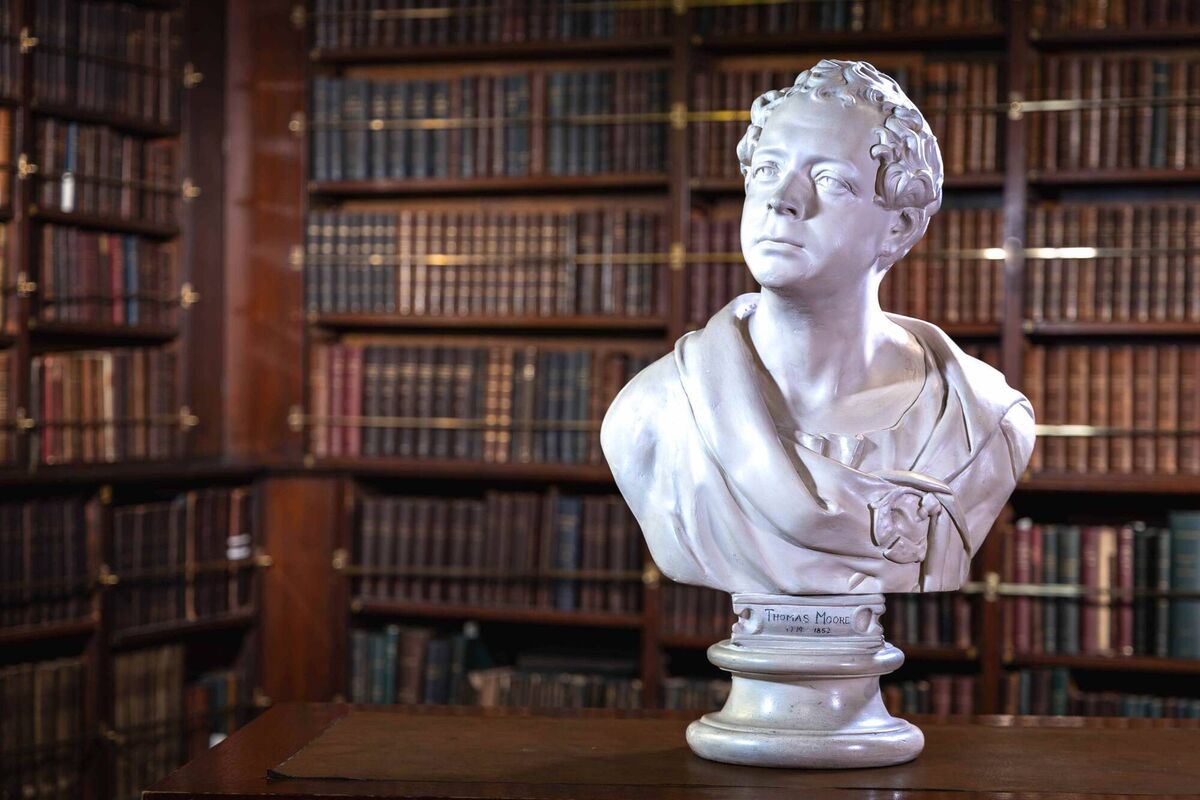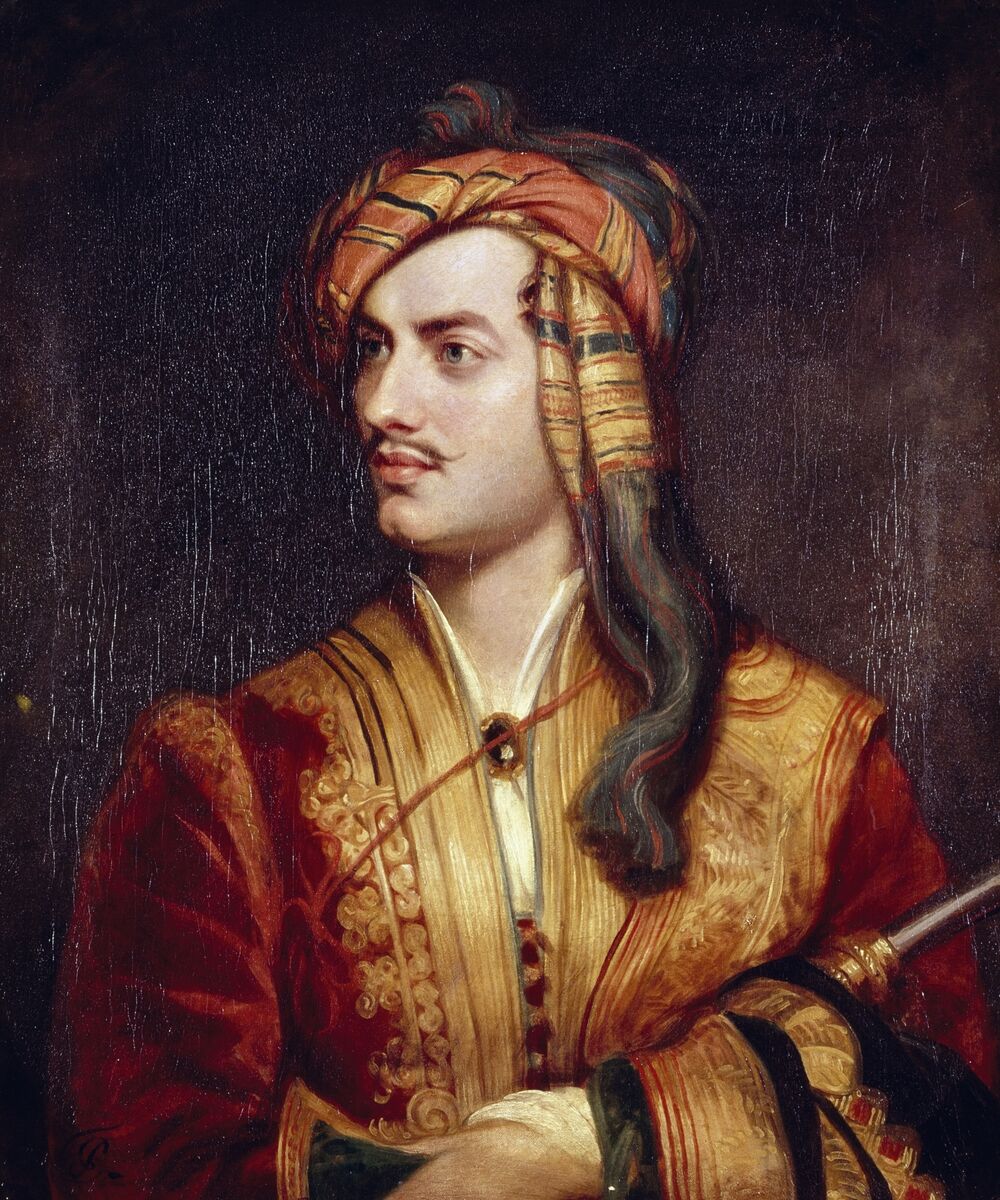New film on Thomas Moore: 'A lot of the ladies liked him, apparently'

Thomas Moore – Bard na hÉireann will be broadcast on TG4 this week. Picture: NLI.
Thomas Moore is all around us, but you possibly never noticed. His birthplace is on the site of J Smyth’s, the legendary old live music bar on Dublin’s Aungier Street (now trading as the Thomas Moore Inn).
There are busts and statues of him in cities around the globe, including Belfast, Dublin and New York. Listen carefully to the opening bars of Dexys Midnight Runners’ track 'Come On Eileen' and you’ll hear a sample of Moore’s song 'Believe Me, If All Those Endearing Young Charms'.
Moore was a titan in Irish life in the nineteenth century. As the century drew to a close, Irish households kept a copy of Moore’s Melodies alongside the Bible, and made sure if sons or daughters were emigrating that the collection was packed off with them on their boat journey abroad.
Moore’s story is full of colourful adventures and friends in the highest echelons of British and Irish society. It's a mystery as to why he has largely disappeared from our consciousness, which makes TG4’s documentary about him over Christmas timely.
“I had read about Thomas Moore. A lot of people in my office had heard about him, but they didn't know anything about the man himself,” says Suzanne McNally, director of Thomas Moore – Bard na hÉireann. “Or else people would say they’d never heard of him, but when you mentioned The Last Rose of Summer or The Minstrel Boy, they’d know the songs. He had a fascinating life.
"He was friends of Robert Emmet and Lord Byron. He lived in Bermuda. He was so famous in his lifetime. We wanted to know if he should be forgotten in Ireland today. That set us off on a journey.”

McNally and her production team have made Moore’s music a big part of that story. It was an inspired – if perhaps an obvious – decision to make. The documentary is peppered with eight soaring studio performances of Moore’s melodies from artists such as Duke Special, Steve Cooney, Méav Ní Mhaolchatha and a breathtaking rendition of Oh! Breathe Not His Name by the soul artist Manukahunney and her band. The live recordings, a mix of traditional with modern interpretations, provide “chapter points,” says McNally, as Moore’s life story unfolds.
Moore was born in 1779, the son of a Dublin grocer. His mother was ambitious for him. He was one of the first Catholics to study at Trinity College. His Irish Catholic identity – at a time when Catholics were second class citizens in Ireland, unable, for example, to sit in parliament – was the defining feature of his identity. It was at Trinity that Moore befriended Robert Emmet.
Moore was less radical than Emmet, but they shared an Enlightenment worldview and the dream of an independent, pluralist Irish nation. Emmet’s execution – in which he was hung, drawn and quartered – was deeply disturbing for Moore, who penned the ballad Oh! Breathe Not His Name in his memory, picking up on Emmet’s famous dying wish that only when Ireland was free could his epitaph be written.
Moore could walk on both sides of the street. At a time when England thought the Irish were barbarous and ignorant, he was a darling of the English aristocracy, invited, for instance, to the Prince Regent’s inauguration fête. King George VI – and the salons of fashionable, bohemian London – delighted in his wit and when he’d play the piano, performing his melodies. As Theo Dorgan, one of the contributors in the documentary, remarks about Moore’s ambiguous position in Anglo-Irish society – Moore wasn’t the only Irish person to be famous in London. He was a man for all seasons.

“It's interesting,” says McNally, “Kevin Whelan, a history professor at Notre Dame University, said in the documentary that at the time, people said of him ‘Tommy dearly loved a lord.’ It's true.
"When you see all his friends, it's the likes of Lord Moira and Lord Byron. When he got into trouble in Bermuda, it was his friends [e.g. Lord Lansdowne] who got him out of that debt.
“As Theo Dorgan said, Moore was still very political. He was Irish. He was proud of that. He walked that thin line between both worlds. He did it well. Doing the research, time and again, people would say, ‘He would go to ‘big houses’ in England and he'd sing for his supper.
"He would enjoy the big feast and then he would perform. A lot of the ladies liked him apparently. He must have been very charismatic. He was a popular man.”
Tellingly, it was when Ireland achieved (limited) independence in the 1920s that Moore started to disappear from view. His reputation took a pounding during the Celtic Revival at the turn of the twentieth century. Joyce often sang his songs.
“Moore’s maladies,” Joyce called them. He loved the songs, but he didn’t love the man. WB Yeats despised Moore’s “incarnate social ambition”, but perhaps Yeats’ hatred sprung from jealousy – there was only room for one person to be Ireland’s national poet.
Moore’s music, which was always prone to melancholy, was reflected in his own life. He lived to a good age, dying in Wiltshire, England, in 1852, outliving cohorts like Daniel O’Connell.
He was happily married to “Bessy”, a young Irish actress, and sister of the famous contemporary actress, Mary Dyke. But tragedy marred their family life – all five of their children died before them.
“It seemed a sad, lonely ending for him, losing all five children before him,” says McNally. “A lot of his friends had all died too. We filmed in Wiltshire. It was sad to see the grave with the names of his family there. But it was a really interesting experience to delve into his life.”
- Thomas Moore – Bard na hÉireann will be broadcast on TG4, 8.25pm, Saturday, December 28, and will be repeated January 8
Thomas Moore and Lord Byron, the most famous poet of his era, not least for his scandalous lifestyle, were firm friends. Byron reckoned there was no one to rival Moore’s talent for adapting words to music.
In 1824, when word filtered back to London that Byron had drowned in western Greece, Moore was, legally, in possession of the Englishman’s memoirs.
Unfortunately, Moore left the manuscript with Byron’s publisher, John Murray, two years beforehand as a security, placing himself in debt to Murray to the tune of 2,000 guineas.
Immediately after news of Byron’s death, a bitter dispute broke out amongst Moore, Murray, Byron’s family and John Cam Hobhouse, Byron’s friend and executor.

Hobhouse, in particular, was worried about the red-hot material in the memoirs, chiefly references about Byron’s homosexual encounters.
After a fraught weekend of negotiation, full of nasty personal charges, Moore finally acquiesced at an infamous Monday morning summit meeting involving six interested parties (and a seventh, if you include Murray’s 16-year-old son) to Hobhouse’s demands that the manuscript be burnt.
Although morose leaving the meeting, Moore still had the energy to leave the group with a parting shot, a story about an Irishman who had just been condemned to death.
Asked if he had anything to add. “Oh nothing,” he replied, “except that by Jesus you’ve settled it all very nicely amongst you!”




